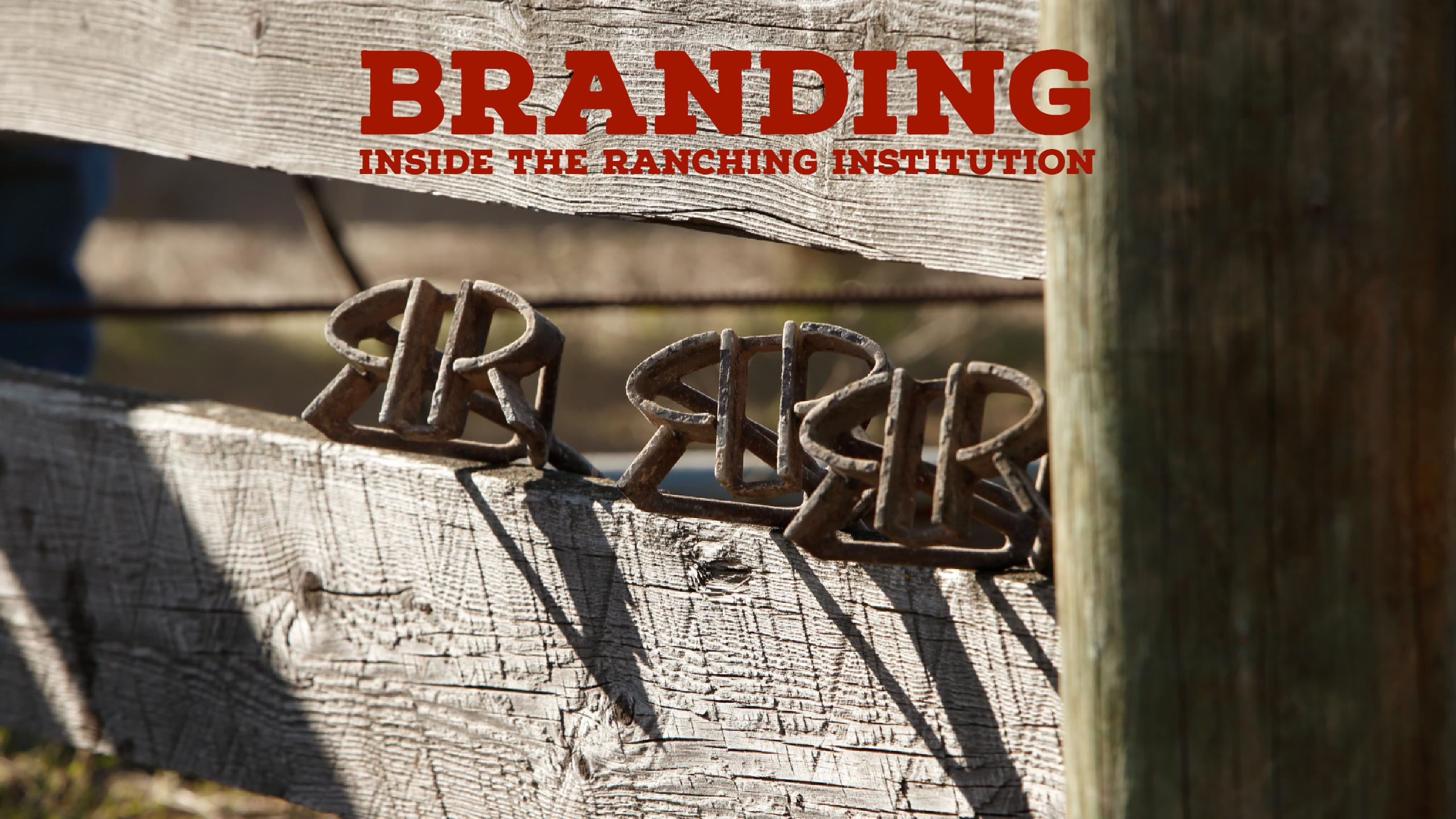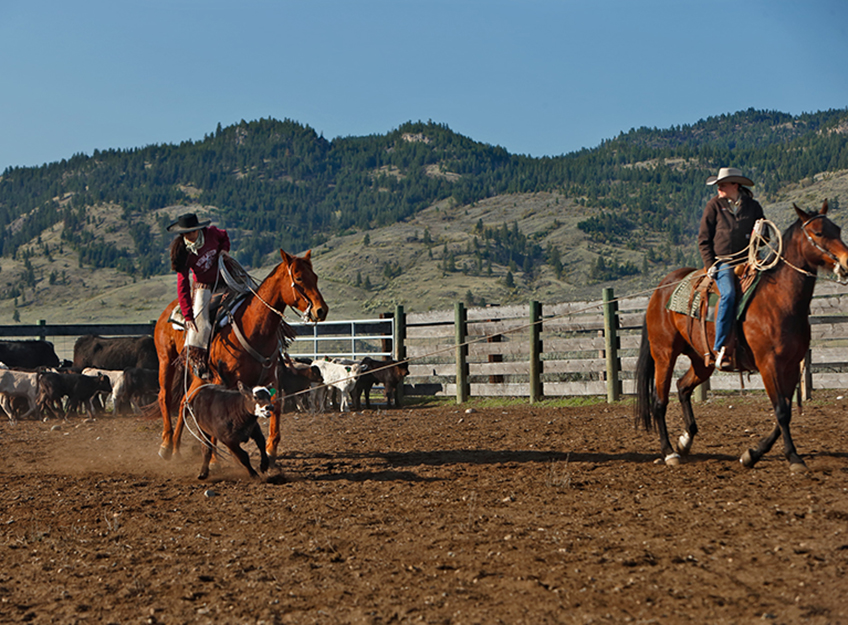Learn the Hows and Whys Behind Branding Cattle

Branding has symbolized the ranching lifestyle for decades. In the western art motif, branding has long stood as the embodiment of cattle ranching. An old wooden corral, ropers on horseback, cowboys kneeling next to a calf, and a big, open sky in the background is a typical branding picture.
It is more than just a scene in an old movie, a chapter from a book, or an antique oil painting. Branding is a very important day for the well-being of the calves. At the Double R Ranch in Loomis, Wash., branding calves is a cornerstone to producing quality beef.
The day starts off gathering the cows and calves from the pasture when the calves are about sixty days old. The calves are then sorted and let into a branding pen. Each calf receives a brand, vaccines, and is castrated if it is a bull. These are delicate procedures and the order of the day is the extreme care taken when handling each calf.
The calf is branded on the hip, which maintains hide quality and keeps with industry Beef Quality Assurance recommendations. The procedure lasts a split second – and handlers are well-trained to keep the calf’s discomfort to a minimum. After receiving a brand and shots, a calf is turned back out with its mother within hours, then returned to pasture.

The practice of branding livestock, or marking the animal with a specific symbol to identify ownership, began long before the cowboy made it famous. According to the Washington State Department of Agriculture, branding first began in 2700 B.C. with the Egyptians. The hieroglyphics allude to branded oxen and other livestock. Through exploration and colonization in the early 16th Century, branding was introduced to the Americas.
Branding is the main method of permanent identification and proof of ownership for livestock. This is particularly important in the western United States, where cattle from multiple ranches are run together or in bordering pastures. A brand can be seen from a distance and cattle can quickly be distinguished by their owner, whereas an ear tag is not as easily visible.
The cattle industry has made several attempts at using technology to track individual cows with little success. All have allowed for manipulation and left herds open to theft and fraud – a reality in ranching that has existed as long as the ranches themselves.
The cows at the Double R Ranch receive a brand with a unique number for individual identification. If an animal’s ear tag fell out or was removed, the number brand would provide the missing information in a permanent form.
In addition, a brand is useful for traceability purposes. At times, the ranch of origin needs to be determined. The brand and accompanying documents can be utilized to trace the cattle back to the original ranch. Ear tags and electronic ID tags display the unique identification but unlike a brand, are not permanent and therefore not dependable if used on their own.

Laws and regulations are in place to ensure the proper use of brands and to monitor cattle shipment across the country. Brand inspections conducted by State Brand Inspectors are required when cattle leave the state, are shipped to be harvested, or when ownership is changed. The Brand Inspector will visually analyze the cattle, checking brands and physical characteristics, and issue a certificate allowing the shipment of the cattle.
The state brand department oversees brand registration and renewal. Each brand in the state is unique in the symbol and placement, and must be approved and recorded by the department. The Agri Beef brand is located on the right hip and is completely unique to the company. This helps ensure the accuracy of proof of ownership.
Agri Beef employees are required to become Beef Quality Assurance certified, which is a set of guidelines for handling cattle properly. We aim to continually provide the best care for our cattle, as they provide us with our way of life. Branding is a safe and effective method of identifying our cattle, allowing us to maintain a well-recorded herd and produce high quality beef.
Tagged as: Animal Well-Being